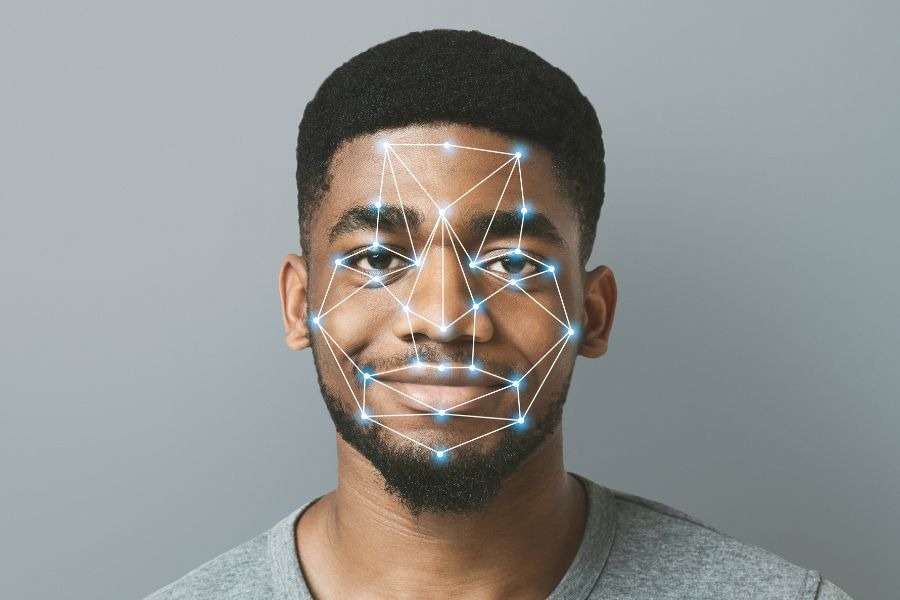The field of facial recognition technology has quickly become a disruptive technology in many sectors such as security and law enforcement, individualized marketing and authentication of the users. The ability to recognize or confirm the person identity based on his/her facial features is changing the face of how we cope with the technology and the world at large. How though, does facial recognition technology even work? This paper gives an all round survey of the principles, techniques, applications, and issues when it comes to facial recognition systems.
Introduction to Facial Recognition Technology
Facial recognition is a subset of biometric identification that uses the unique characteristics of an individual’s face to recognize or verify their identity. Unlike traditional identification methods such as passwords or ID cards, facial recognition provides a non-intrusive, fast, and often seamless way to confirm who someone is.
This technology leverages advancements in computer vision, artificial intelligence (AI), and machine learning to analyze facial features captured via images or video and compare them against stored facial data.
The Fundamental Process of Facial Recognition
The facial recognition process can be broken down into several key stages:
- Image Acquisition
The first step involves capturing a clear image or video of a person’s face using cameras or sensors. The quality of the image is critical — factors such as lighting, angle, resolution, and facial expressions can affect recognition accuracy.
- Face Detection
Once the image is acquired, the system identifies the presence and location of one or more faces within the frame. This step is crucial in filtering out irrelevant data and focusing analysis on the face regions.
Modern facial detection algorithms, often based on deep learning models like Convolutional Neural Networks (CNNs), can detect faces under various conditions including partial occlusions and different orientations.
- Facial Landmark Localization
After detecting the face, the system pinpoints key facial landmarks such as the eyes, nose, mouth, and jawline. These landmarks help standardize the face’s alignment by compensating for tilt, rotation, and scale, enabling consistent analysis.
- Feature Extraction
This stage involves extracting unique, distinguishing facial features from the aligned face image. These features can include distances between key landmarks (e.g., the gap between eyes), shapes of facial contours, texture patterns, and other biometric identifiers.
Advanced systems use deep learning to convert these features into a mathematical representation known as a facial embedding or feature vector—a fixed-length numerical code capturing the essence of the face.
- Facial Template Creation and Storage
The extracted features form a facial template that is stored securely in a database. This template is used for future comparisons when attempting to identify or verify individuals.
- Matching and Recognition
When a new face is presented, the system extracts its features and compares the resulting template against stored templates. Depending on the application, this can be:
- Identification: Determining who the person is by searching the database for the closest match.
- Verification: Confirming whether the person matches a claimed identity (one-to-one comparison).
Similarity scores based on distances between feature vectors determine if a match is confirmed, using thresholds optimized for accuracy and minimizing false positives or negatives.
Technological Foundations Behind Facial Recognition
Computer Vision
Computer vision algorithms process and analyze visual data from images or video streams. Techniques such as edge detection, image segmentation, and pattern recognition enable systems to isolate faces and extract meaningful features.
Machine Learning and Deep Learning
Machine learning models improve recognition accuracy by learning from vast datasets of labeled facial images. Deep learning, particularly CNNs, has significantly advanced the field by automatically discovering complex feature hierarchies without manual intervention.
Models like FaceNet, VGGFace, and ArcFace have set new standards in generating robust facial embeddings that perform well across diverse demographics and conditions.
3D and Infrared Imaging
To address challenges like pose variation and lighting conditions, some facial recognition systems use 3D sensors or infrared cameras. 3D systems capture depth information, providing a more comprehensive facial map. Infrared imaging enhances performance in low-light or nighttime environments.
Applications of Facial Recognition Technology
Facial recognition is increasingly integrated into various sectors, including:
Security and Law Enforcement
Used for surveillance, criminal identification, and access control, facial recognition helps authorities enhance public safety and streamline investigations.
Device Authentication
Smartphones and laptops employ facial recognition for biometric login, offering a secure and convenient alternative to passwords or fingerprint scanners.
Retail and Marketing
Stores use facial analytics to understand customer demographics, personalize advertising, and enhance shopping experiences.
Healthcare
Facial recognition assists in patient identification, monitoring patient emotions, and detecting genetic disorders.
Travel and Hospitality
Airports implement facial recognition for seamless passenger boarding, customs processing, and hotel check-ins.
Challenges and Ethical Considerations
Despite its benefits, facial recognition technology faces several challenges:
Accuracy and Bias
Recognition systems can exhibit disparities in accuracy across different races, genders, and age groups due to biased training datasets. This can lead to misidentifications with serious consequences.
Privacy Concerns
Mass surveillance and unauthorized data collection raise concerns about individual privacy rights and consent.
Security Risks
Stored facial data can be vulnerable to hacking or misuse. Ensuring robust data protection measures is critical.
Regulation and Governance
Legal frameworks around facial recognition use vary globally, with ongoing debates about acceptable applications and user rights.
Future Trends in Facial Recognition
The technology continues to evolve with innovations such as:
- Improved Anti-Spoofing: Techniques to detect and prevent spoofing attacks using photos, videos, or masks.
- Edge Computing: Processing facial recognition on devices locally to reduce latency and improve privacy.
- Multimodal Biometrics: Combining facial data with voice, iris, or fingerprint recognition for higher accuracy.
- Explainable AI: Enhancing transparency in decision-making processes of recognition algorithms.
Conclusion
Facial recognition technology harnesses advanced computer vision and AI to analyze unique facial features, enabling fast and reliable identification or verification. Its applications span security, consumer electronics, healthcare, and more, transforming multiple facets of modern life. However, addressing challenges related to accuracy, bias, privacy, and regulation is crucial for responsible and ethical deployment.
As research progresses and technology matures, facial recognition is set to become even more integral to digital interactions, balancing convenience and security with respect for individual rights.


